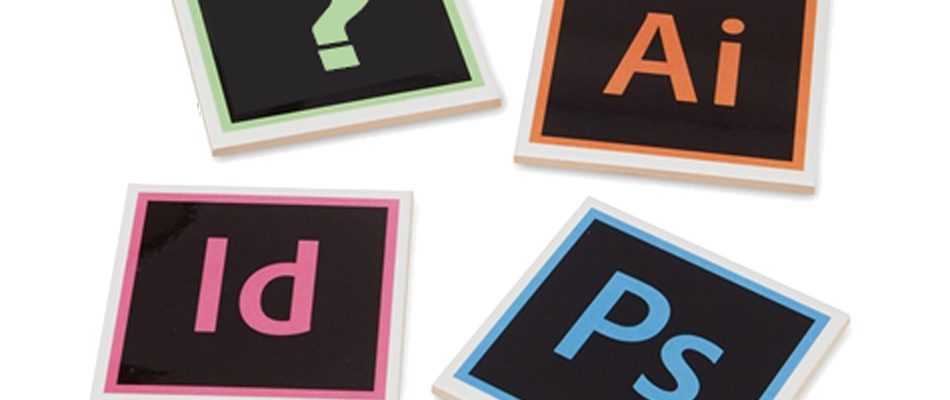We frequently get questions from clients about graphics, the difference between certain file types, how designs turn from files into produced materials, and which design programs to use for which projects. In the coming weeks, we’ll be posting some of the most common questions we get and compiling a Beginner’s Guide to Graphics.
So, to start, Photoshop vs. Illustrator vs. InDesign – does it matter?
The answer is simply: Yes, the design program we use depends on the type of project we’re doing.
Adobe Photoshop uses pixels (colored squares) to build images. Simply put, Photoshop should be used for editing existing photos. Ask any designer at our agency, and they are pretty adamant about this fact. That being said, you may find our web developers utilizing the program to build assets for websites, but our graphic designers leave the logo and layout design for Illustrator or InDesign. Photoshop is a great resource to retouch an image or adjust lighting – it’s basically Instagram’s image filters times a thousand.
Alternatively, Adobe Illustrator, as you can guess from its name, is best used for creating and editing vector-based illustration such as logos and other graphic design elements. What is vector-based artwork, you ask? Vector graphics are scalable images that can be sized smaller or larger without losing resolution (aka “clarity”). Illustrator uses mathematical line-based algorithms to essentially outline the image, which means that when you adjust an image’s size it always stays in proportion.
Finally, InDesign works best for laying out printed materials such as multi-page brochures, newsletters, ads, business cards or even books. Our designers typically take all the elements that were created in Photoshop and Illustrator and put them inside the InDesign files. InDesign is great for larger projects because it allows you to create page templates and spreads.
At the end of the day, any of these programs can be used to develop the marketing and design materials you need, but we recommend using each program as it is intended in order to get the most out of the work.
—
The Beginner’s Guide to Graphics a four-part series. Read on to learn more!
